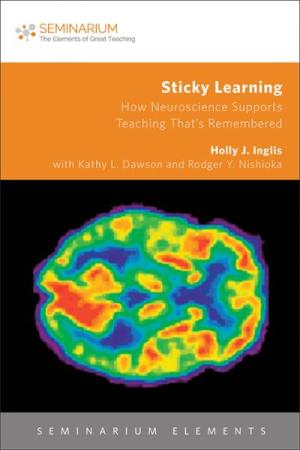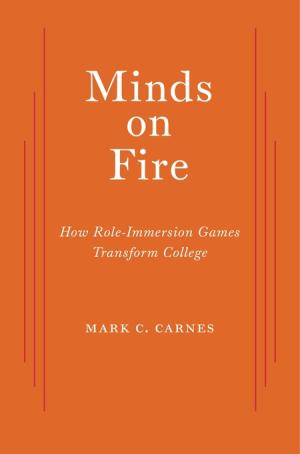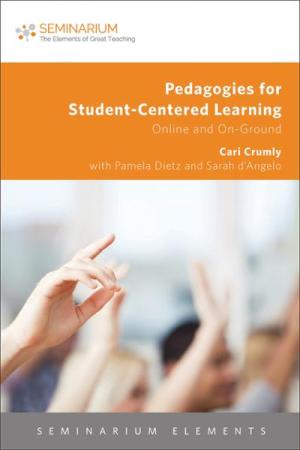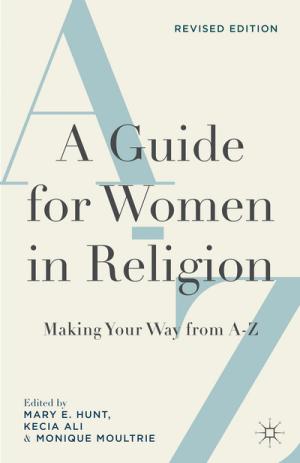Resources

Journal Issue.

Journal Issue.
Includes syllabi from a variety of college and university courses, across all disciplines, that have a strong flavor of “civic agency,” the capacity to work across differences to solve public problems, create lasting civic goods, and shape the world around us in democratic ways. The project emphasizes courses that speak to citizens as citizens, concerned about co-creating their communities of different scale.
A project team developing resources for teaching Biblical languages using methods borrowed from the field of Second Language Acquisition used for modern languages. 

Click Here for Book Review Abstract: Despite the introduction of new technologies for classrooms, many seminary courses still utilize primarily auditory methods to convey content. Course outcomes may include opportunities for learners to demonstrate knowledge and skills gained but may not include opportunities for learners to begin to embed knowledge and skills into their long-term memory. Educators are engaging with neuroscientists to reshape classroom practices, content delivery, curriculum design, and physical classroom spaces to enhance students’ learning and memory, primarily in elementary and secondary education. Why not in seminary education? An overview of how learning occurs in our brain, what the different types of memory are, and how memory is created serves as a framework for suggesting pedagogical tools. These brain-friendly tools are specifically applied to individual academic disciplines, enabling instructors to make concrete modifications in the structure and content of what is taught, making learning more ‘sticky.’ Inglis’s synopsis of the use of neuroscience in the classroom and suggested action is followed by a collaborative dialogue with Kathy L. Dawson and Rodger Y. Nishioka. Dawson and Nishioka provide practical commentary regarding the successful implementation of Inglis’s proposed approach. As a group, Inglis, Dawson, and Nishioka create a text that extends pedagogical innovation in inspiring but practical ways. (From the Publisher)

Click Here for Book Review Abstract: Why are so many students intellectually disengaged? Faculty, administrators, and tuition-paying parents have been asking this question for nearly two centuries. And the answer is always more or less the same: students are so deeply absorbed in competitive social play (fraternities, sports, beer pong, World of Warcraft, social media) that they neglect academics. In Minds on Fire, Mark Carnes shows how role-immersion games channel students’ competitive (and sometimes mischievous) impulses into transformative learning experiences. His discussion is based on interviews with scores of students and faculty who have used a pedagogy called Reacting to the Past, which features month-long games set during the French revolution, Galileo’s trial, the partition of India, and dozens of other epochal moments in disciplines ranging from art history to the sciences. These games have spread to over three hundred campuses around the world, where many of their benefits defy expectations. Students think more critically by internalizing alternative selves, and they understand the past better by filtering it through their present. Fierce competition between opposing sides leads to strong community bonds among teammates and develops speaking, writing, leadership, and problem-solving skills. Minds on Fire is a provocative critique of educational reformers who deplored role-playing pedagogies, from Plato to Dewey to Erikson. Carnes also makes an impassioned appeal for pedagogical innovation. At a time when cost-cutting legislators and trustees are increasingly drawn to online learning, Carnes focuses on how bricks-and-mortar institutions of higher education can set young minds on fire. (From the Publisher)

Click Here for Book Review Abstract: What comes to mind when you hear student-centered learning? Do you immediately see a classroom without a teacher? Do you see students teaching other students? How do you know which pedagogies to use when designing the best learning environment? The question of determining what pedagogies to use within the classroom (on-ground or virtual) can often plague teachers given today's student. This book will help you to identify the difference between teacher-centered and student-centered learning and the various pedagogies commonly associated with each. This book will draw upon the research and experience of three different educators and their pedagogical variations and uses within the classroom and online. Crumly’s synopsis of student-centered learning and suggested action is followed by a collaborative dialogue with Pamela Dietz and Sarah d'Angelo. Dietz and d'Angelo provide practical commentary regarding the successful implementation of Crumly's proposed approaches. As a group, Crumly, Dietz, and d'Angelo create a text that extends pedagogical innovation in inspiring but practical ways. (From the Publisher)

Click Here for Book Review Abstract: There is still resistance in Christian institutions to interreligious dialogue. Many feel that such a practice weakens Christian faith, and promotes the idea that Christianity is merely one among many different religious options. When it comes to higher education, there is the fear that both college and seminary students will “lose their faith” if they are invited to study other religious traditions from a positive perspective. Unfortunately, this attitude belies the current culture in which we live, which constantly exposes us to the beliefs and practices of others. Kristin Johnston Largen sees this setting as an opportunity and seeks to provide not only the theological grounding for such a position but also some practical advice on how both to teach and live out this conviction in a way that promotes greater understanding and respect for others and engenders a deeper appreciation of one’s own faith tradition. Largen’s synopsis of interreligious education and suggested action includes contributions by Mary E. Hess and Christy Lohr Sapp. Hess and Sapp provide practical commentary regarding the successful implementation of Largen’s proposed approach. As a group, Largen, Hess, and Sapp create a text that extends pedagogical innovation in inspiring but practical ways. (From the Publisher)

Click Here for Book Review Abstract: The Guide is a welcome companion for women in religious studies. From undergraduates to retired professors, this distilled wisdom of several generations of colleagues is an important book to have handy. Whether seeking a job, preparing for tenure, working at a non-profit organization, entering the publishing world, figuring finances, mentoring or being mentored, the reader will find just what she (or he—men find it useful too) needs to know. This volume reflects the diversity of women's experiences, the range of opportunities, the pitfalls and promises of religious studies that span ministry, academia, and activism. It is a good investment for one's future career and a welcome gift for students. This second edition is updated to reflect the rapidly changing field, especially technological innovations. (From the Publisher)

"Graff offers a highly readable and down-to-earth perspective on some of the most ballyhooed issues in higher education today. . . . By encouraging us to argue together, he may yet help us to reason together."—Henry Louis Gates, Jr. Higher education should by a battleground of ideas: the real problem, Gerald Graff says, is that students are not getting more out of the battle. In this lively book, Graff argues that the "culture wars" now being fought over multiculturalism and political correctness are actually a sign of the intellectual vitality of American education—but they need to be used creatively, made part of the educational process itself. (From the Publisher)